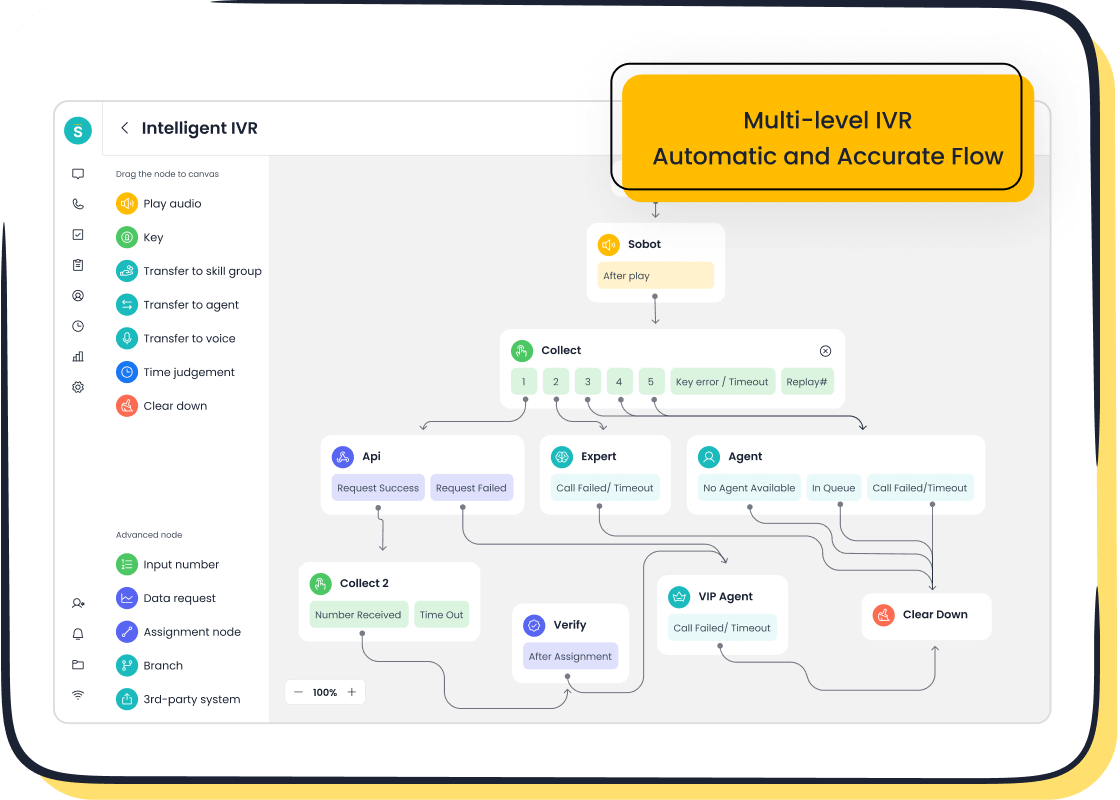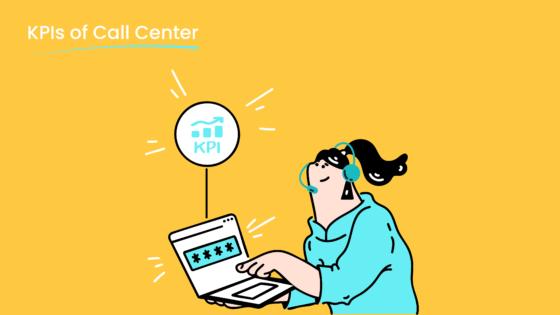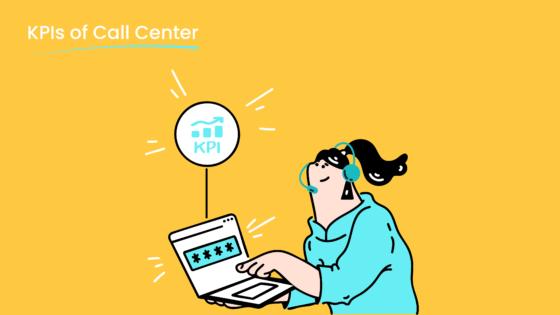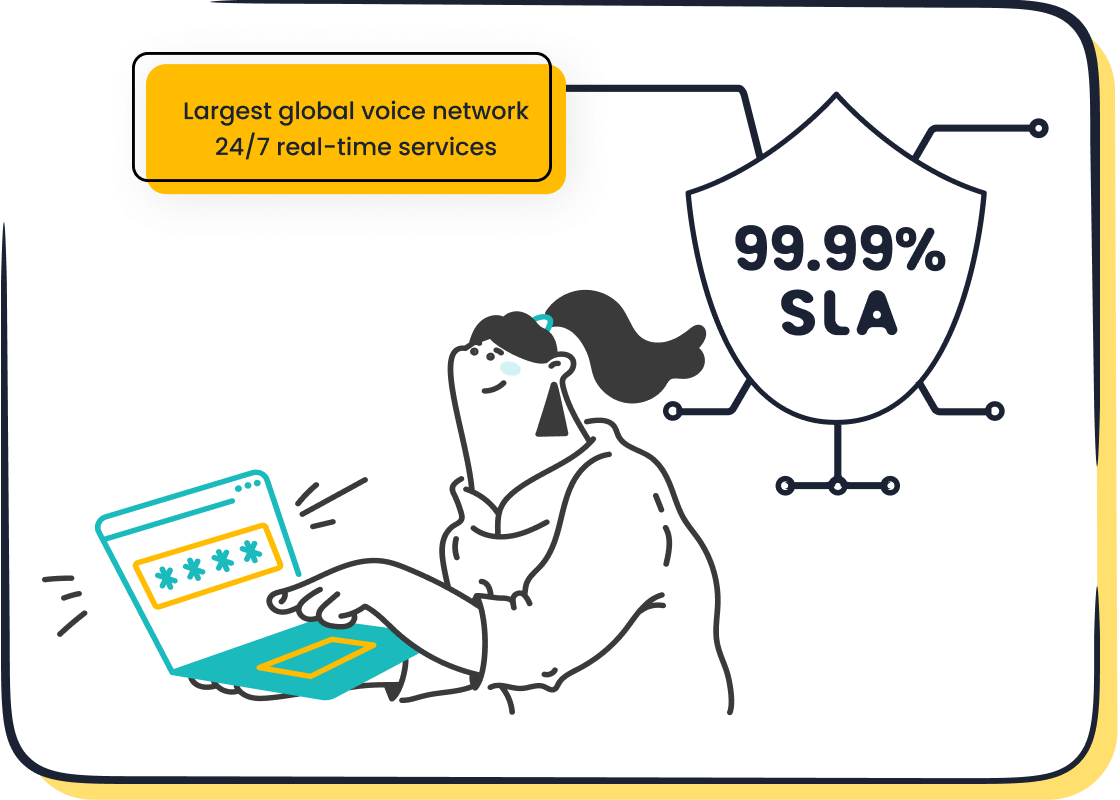How to Enhance Customer Service Representative Skills

Strong communication skills are the backbone of good customer service. When you communicate effectively, you make customers feel valued and understood. This builds trust and loyalty, which are essential for long-term success. Did you know that 91% of customers are more likely to buy again after a positive service experience? Plus, 86% are even willing to pay more for better service. These numbers show how much customer satisfaction depends on how well you connect with them.
To enhance the customer service representative abilities needed, improving your communication skills can transform your interactions. Whether it’s listening actively or responding clearly, every small effort makes a big difference. Tools like Sobot’s solutions can also help you streamline communication and deliver exceptional service. Ready to take your skills to the next level? Let’s dive in!
Key Customer Service Representative Abilities Needed
Empathy and Emotional Intelligence
Empathy is the cornerstone of good customer service. When you genuinely understand and share a customer’s feelings, it creates a connection that builds trust. Did you know that 96% of consumers believe empathy is crucial in customer support interactions? Yet, 64% feel companies often miss the mark on delivering a human touch. This gap shows how vital emotional intelligence is in making customers feel valued.
Imagine a customer frustrated about a delayed order. Instead of just offering a refund, you acknowledge their inconvenience and express understanding. This small act of empathy can turn a negative experience into a positive one. By embedding empathy into your approach, you can create personalized and satisfying experiences that foster loyalty. Tools like Sobot’s Omnichannel Solution can help you manage interactions across platforms, ensuring every customer feels heard and understood.
“By embedding empathy in customer service strategies, enterprise companies can create more personalized, engaging, and satisfying experiences, leading to increased loyalty and advocacy.”
Active Listening for Better Customer Understanding
Listening is more than just hearing words; it’s about understanding the message behind them. Active listening helps you uncover the root cause of a customer’s issue, making it easier to provide effective solutions. For example, a client upset about a marketing campaign might reveal, through careful listening, that the real problem lies in mismatched messaging. This approach not only resolves complaints but also strengthens relationships.

Active listening also shows customers that their concerns matter. It can de-escalate tense situations and build trust. Simple techniques like paraphrasing their concerns or asking clarifying questions can make a big difference. Sobot’s Voice/Call Center, with features like call tracking and AI-powered voicebots, can support you in gathering insights and responding effectively.
| Benefit of Active Listening | Description |
|---|---|
| Understanding Customer Concerns | Helps you see situations from different angles and acknowledge customer feelings. |
| Building Trust | Demonstrates respect and fosters a culture of trust. |
| Better Resolutions | Leads to effective solutions and higher customer satisfaction. |
Clarity and Conciseness in Communication
Clear communication is key to avoiding misunderstandings and managing expectations. Customers appreciate honesty and straightforwardness. For instance, being upfront about policies or timelines can prevent frustration later. Keeping your responses concise and context-driven ensures customers understand your message without confusion.
Using tools like Sobot’s AI-powered solutions can enhance your communication. Features like intelligent IVR and unified workspaces streamline interactions, allowing you to focus on delivering clear and concise responses. This not only improves customer satisfaction but also boosts your efficiency as a representative.
| Evidence | Description |
|---|---|
| Honesty in communication | Builds trust by being transparent about policies and services. |
| Art of effective communication | Simplifies complex concepts for better understanding. |
| Clear client communication | Keeps messages concise and context-driven to avoid confusion. |
Patience and Adaptability in Challenging Situations
Patience is your superpower when dealing with challenging customer service situations. It helps you stay calm and focused, even when customers are upset or frustrated. But patience alone isn’t enough. You also need adaptability to adjust your approach based on the situation. Every customer is different, and their needs can vary widely. For example, one customer might need detailed explanations, while another just wants a quick resolution. Your ability to adapt ensures you meet these unique needs effectively.
Adaptability also shines when unexpected changes occur. Imagine a sudden surge in customer inquiries during a holiday sale. Staying flexible allows you to handle the increased demand without compromising service quality. It also helps you identify customer pain points and quickly find solutions. This combination of patience and adaptability not only improves customer satisfaction but also strengthens your problem-solving skills.

Sobot’s Voice/Call Center can be a game-changer here. Its smart call routing and AI-powered voicebot features help you manage high-pressure situations with ease. By automating repetitive tasks, it frees you up to focus on providing personalized support. Plus, its real-time monitoring tools let you track and adjust your strategies on the fly, ensuring you deliver good customer service no matter the circumstances.
Tip: Practice mindfulness techniques to stay patient and adaptable. Deep breathing or a quick mental reset can help you maintain composure during tough interactions.
Positive Language and Tone to Build Rapport
Your words matter, but your tone matters even more. Studies show that only 7% of communication comes from words, while 38% is influenced by tone. A positive tone can instantly build trust and make customers feel valued. Starting conversations with a friendly greeting or an icebreaker helps set the stage for a productive interaction. For example, saying, “Let’s work together to solve this,” fosters a sense of teamwork and collaboration.
Using empathy in your tone can also turn negative experiences into positive ones. If a customer is upset about a delayed order, a calm and understanding tone can de-escalate the situation. Techniques like mirroring the customer’s tone and emotions show that you’re genuinely listening. This approach not only resolves issues but also leaves a lasting impression.
Sobot’s Omnichannel Solution supports you in maintaining a consistent and positive tone across all communication channels. Its unified workspace consolidates customer data, helping you personalize interactions and respond with empathy. Whether you’re handling a complaint via email or a query on social media, this tool ensures your tone remains professional and customer-focused.
Note: Avoid negative phrases like “I can’t” or “That’s not possible.” Instead, use positive alternatives like “Here’s what I can do for you.”
Practical Steps to Develop Communication Skills

Role-Playing Scenarios to Practice Empathy
Role-playing is a fantastic way to sharpen your empathy skills. By stepping into your customer’s shoes, you can better understand their emotions and challenges. For example, imagine acting as a frustrated customer while a colleague plays the role of a representative. This exercise helps you see things from their perspective and refine your responses. It’s not just about solving problems; it’s about making customers feel heard and valued.

Studies show that role-playing enhances learning in emotional, cognitive, and behavioral areas. It encourages self-reflection and helps you apply theoretical knowledge in real-life situations. Plus, it boosts problem-solving and teamwork skills. Tools like Sobot’s Voice/Call Center can make this even more effective. With features like call recording and AI-powered voicebots, you can analyze your interactions and identify areas for improvement.
Tip: Use role-playing to practice handling tough situations, like dealing with an angry customer or resolving a complex issue. This builds confidence and prepares you for real-world challenges.
Seeking Constructive Feedback from Supervisors and Peers
Feedback is your secret weapon for growth. When you ask for constructive feedback, you gain insights into your strengths and areas for improvement. Supervisors can guide you on meeting expectations, while peers can offer tips based on their experiences. This creates a culture of continuous learning and collaboration.
Effective feedback focuses on specific actions and provides actionable suggestions. For instance, a supervisor might suggest improving your tone during calls or managing time better. This not only enhances your communication but also boosts team performance. Sobot’s unified workspace can support this process by providing data analytics and performance insights, helping you track your progress over time.
Note: Always approach feedback with an open mind. It’s not criticism; it’s a tool to help you grow and deliver good customer service.
Participating in Training Programs and Workshops
Training programs and workshops are excellent for honing your communication skills. They offer structured learning environments where you can practice and improve. These sessions often include activities like group discussions, role-playing, and case studies, which make learning interactive and fun.
Research shows that training leads to measurable improvements, such as better teamwork, higher job satisfaction, and smoother collaboration. It also boosts confidence and reduces workplace conflicts. Sobot offers training resources tailored to customer service needs, ensuring you stay ahead in your field. By participating in these programs, you not only enhance your skills but also contribute to higher customer satisfaction and loyalty.
| Improvement Type | Description |
|---|---|
| Better customer & client relationships | Enhances service quality and customer satisfaction. |
| Increased effectiveness | Improves overall performance in tasks. |
| Higher job satisfaction | Leads to a more fulfilling work experience. |
Tip: Look for workshops that focus on active listening, empathy, and clear communication. These are the pillars of excellent customer service.
Practicing Active Listening Techniques Daily
Active listening isn’t just a skill—it’s a habit that can transform your customer service interactions. By practicing it daily, you can better understand customer concerns and provide solutions that truly address their needs. This approach not only improves communication but also builds trust and loyalty. Imagine a customer calling about a recurring issue. Instead of jumping to conclusions, you listen carefully, ask clarifying questions, and repeat their concerns to confirm understanding. This makes them feel valued and ensures you’re on the same page.
The benefits of active listening go beyond individual interactions. It directly impacts key metrics that reflect the quality of your service. For example, a higher customer satisfaction score often results from customers feeling heard. Similarly, active listening can reduce churn rates and increase repeat purchase rates. Here’s a quick look at how it influences various metrics:
| Metric | Description |
|---|---|
| Customer Satisfaction Score | Measures customer satisfaction with after-sales service, influenced by active listening. |
| Customer Loyalty Score | Indicates customer loyalty to the brand, reflecting the impact of active listening. |
| Net Promoter Score | Gauges customer loyalty and likelihood to recommend, often influenced by feeling heard. |
| Churn Rate | A lower churn rate indicates effective retention through addressing customer needs. |
| Repeat Purchase Rate | Shows contribution of active listening to customer loyalty in non-subscription businesses. |
Practicing active listening daily doesn’t require fancy tools. Simple techniques like maintaining eye contact during in-person interactions or paraphrasing customer concerns during calls can make a big difference. Tools like Sobot’s Voice/Call Center can further enhance this practice. With features like call tracking and AI-powered voicebots, you can analyze conversations and identify areas for improvement. This ensures you’re always delivering good customer service.
Tip: Dedicate a few minutes after each interaction to reflect on what went well and what could improve. This habit sharpens your listening skills over time.
Leveraging Sobot's Voice/Call Center for Real-Time Communication Training
If you’re looking to take your communication skills to the next level, Sobot’s Voice/Call Center is your go-to solution. It’s not just a tool for managing calls—it’s a platform designed to help you grow as a customer service professional. With its real-time monitoring and AI-powered voicebots, you can practice and refine your skills during actual customer interactions.
One standout feature is the call recording and transcription capability. This allows you to revisit past conversations, identify areas for improvement, and track your progress over time. For example, you might notice that your tone could be more empathetic or that you missed an opportunity to clarify a customer’s concern. These insights are invaluable for honing your active listening and communication skills.
The platform also offers intelligent IVR and smart call routing, which streamline workflows and reduce stress during high-pressure situations. This means you can focus more on connecting with customers and less on navigating complex systems. Plus, the unified workspace consolidates all customer data, making it easier to personalize interactions and deliver exceptional service.
Note: Regularly review your performance metrics within the platform. This helps you set clear goals and measure your improvement in delivering good customer service.
Applying Communication Skills in Real-World Customer Service Scenarios
Handling Complaints with Empathy and Professionalism
Complaints are inevitable in customer service, but how you handle them can make all the difference. Empathy is your secret weapon here. When you show customers you understand their frustration, it builds trust and diffuses tension. For example, if a customer complains about a delayed delivery, saying, “I’m sorry for the inconvenience. I understand how frustrating this must be,” can instantly calm the situation. Research shows that customers are more forgiving when they receive an apology rather than compensation. In fact, 45% retract negative evaluations after hearing “I’m sorry,” compared to only 23% when offered compensation.

Empathy also makes customers feel valued, increasing their satisfaction and loyalty. Tools like Sobot’s Voice/Call Center can help you manage complaints effectively. Features like call recording and transcription allow you to revisit conversations and refine your approach. Plus, its smart call routing ensures customers reach the right agent, reducing frustration and improving resolution times.
Tip: Always acknowledge the customer’s feelings before offering solutions. This simple step can turn a complaint into an opportunity for good customer service.
Resolving Conflicts Using Clear and Concise Communication
Conflicts can arise in any customer interaction, but clear communication can turn them into opportunities for growth. When you explain resolution steps in simple terms, customers feel reassured and understood. Avoid jargon and focus on being direct. For instance, instead of saying, “We’re experiencing technical difficulties,” try, “Our system is down, but we’re working to fix it within the next hour.” Honesty and clarity go a long way in resolving disputes.
Active listening is equally important. Pay attention to what the customer says and repeat their concerns to confirm understanding. This approach not only de-escalates conflicts but also strengthens relationships. Sobot’s Omnichannel Solution can support you here. Its unified workspace consolidates customer data, helping you personalize responses and maintain clear communication across channels.
“Honesty and clear communication play an important role in the resolution process.”
Personalizing Interactions to Enhance Customer Experience
Personalization is the key to creating memorable customer experiences. When you tailor your approach to each customer, it shows you care about their unique needs. For example, addressing a customer by name or referencing their previous interactions can make them feel valued. Studies reveal that 80% of consumers are more likely to make a purchase when brands offer personalized experiences. On the flip side, 71% feel frustrated when interactions lack a personal touch.
Sobot’s Omnichannel Solution makes personalization easy. Its unified workspace gives you access to customer history, preferences, and data, enabling you to craft responses that resonate. Whether you’re replying to an email or handling a social media query, this tool ensures every interaction feels personal and seamless. By focusing on personalization, you not only enhance customer satisfaction but also build loyalty.
Note: Small gestures like remembering a customer’s name or preferences can make a big impact on their overall experience.
Managing Difficult Customers with Patience and Adaptability
Dealing with difficult customers can feel overwhelming, but patience and adaptability can turn these challenges into opportunities. When you stay calm and flexible, you create a space where customers feel heard and respected. This approach not only resolves issues but also builds trust and loyalty.
Patience allows you to listen without interrupting, even when customers are upset. For example, if someone is frustrated about a billing error, let them vent before offering a solution. Adaptability, on the other hand, helps you adjust your communication style to match the customer’s needs. Some may prefer detailed explanations, while others want quick resolutions. By combining these skills, you can handle any situation with confidence.
Here’s why patience and adaptability matter:
- Training in customer service strengthens these skills, empowering you to manage tough situations.
- Strong customer service skills improve customer loyalty and retention.
- Confident employees deliver better outcomes, even in high-pressure scenarios.
Sobot’s Voice/Call Center can make this process easier. Its smart call routing ensures customers reach the right agent, reducing frustration. Features like real-time monitoring and AI-powered voicebots help you stay focused on delivering good customer service, even during peak times. These tools free you from repetitive tasks, so you can concentrate on resolving issues effectively.
Tip: Practice deep breathing or take a quick pause when dealing with challenging customers. It helps you stay composed and respond thoughtfully.
Using Sobot's Omnichannel Solution to Streamline Customer Interactions
Streamlining customer interactions is essential for delivering seamless service. Sobot’s Omnichannel Solution simplifies this process by unifying all communication channels into one platform. Whether customers reach out via email, social media, or phone, you can manage everything from a single workspace.
This solution doesn’t just make your job easier—it also delivers measurable results. For instance:
| Metric | Improvement |
|---|---|
| Inbound discussion volume | Reduced by 20% |
| Positive feedback | Increased to 96%+ |
| Correct answers | Over 80% |
| Customer satisfaction (CSAT) | 97% |
| Problem resolution rate | 85% |
| Customer happiness | 99% |
| Sign-off rate | Increased by 35% |
| COD collection rate | Increased by 40% |

These numbers highlight how Sobot’s Omnichannel Solution improves efficiency and customer satisfaction. Its AI-driven automation handles repetitive queries, freeing you to focus on complex issues. The unified workspace also provides customer history and preferences, enabling personalized service. This level of efficiency not only enhances customer satisfaction but also boosts your confidence as a representative.
Note: Use the analytics feature to track your performance and identify areas for improvement. It’s a great way to continuously refine your skills.
Tools and Resources to Support Skill Enhancement

Sobot's Voice/Call Center for Unified Communication Management

If you're looking to streamline your communication processes, Sobot's Voice/Call Center is a game-changer for customer service professionals. This tool offers a unified workspace where you can manage calls and customer information seamlessly. Features like multi-language support and global time zone compatibility make it ideal for international businesses. Imagine being able to handle inquiries from different regions without missing a beat. That’s the power of Sobot.
The platform also includes AI-powered voice bots that can handle simple inquiries, freeing you to focus on more complex tasks. This not only improves efficiency but also reduces labor costs by up to 50%. Plus, with access to multiple channels like WhatsApp and Facebook, you can reach customers wherever they are. Businesses using Sobot have reported a 150% increase in sales, proving its effectiveness in delivering good customer service.
| Feature/Benefit | Description |
|---|---|
| Multi-language support | Enhances user experience and service efficiency in contact centers. |
| Global support across timezones | Essential for international contact centers, aiding in business growth. |
| AI voice bot implementation | Replaces manual calls, improving efficiency and handling simple inquiries. |
| Cost reduction | Achieves 50% lower labor costs and 200% higher efficiency. |
| Increased sales | Reports a 150%+ increase in sales due to improved service. |
Tip: Use Sobot's call recording feature to review past interactions and identify areas for improvement.
Online Workshops and Webinars for Skill Development
Online workshops and webinars are fantastic for sharpening your communication skills. They provide a structured environment where you can learn from experts and interact with peers. Metrics like attendance rates and engagement scores show how effective these sessions can be. For example, high attendance rates often indicate that the content resonates with participants, while feedback scores offer insights into the quality of the training.
These sessions are especially valuable for customer service professionals. They cover topics like active listening, empathy, and conflict resolution—skills that are essential for delivering good customer service. Plus, many webinars offer on-demand replays, so you can revisit the material whenever you need a refresher.
| Metric | Description |
|---|---|
| Registration Numbers | Indicates effective promotion and interest in the topic. |
| Attendance Rate | Measures the effectiveness of reminders and real interest in the content. |
| Engagement Metrics | Reflects audience interaction, suggesting content resonance. |
| Feedback Scores | Offers direct feedback on content quality and overall experience from attendees. |
| On-Demand Replay Views | Extends understanding of long-term value through replay viewership. |
Note: Look for workshops that focus on real-world scenarios. This makes it easier to apply what you learn directly to your role.
Books and Guides on Effective Communication Techniques
Books and guides are timeless resources for improving your communication skills. They offer strategies and insights that you can apply in both professional and personal settings. For instance, one study found that 86% of professionals attribute workplace failures to poor communication. This highlights how critical it is to master these skills.
Dr. Janice Derr’s book on statistical consulting emphasizes the importance of collaboration and understanding diverse perspectives. Similarly, other guides provide practical tips for building relationships and resolving conflicts. Whether you're new to customer service or a seasoned professional, these resources can help you refine your approach and boost customer satisfaction.
Tip: Dedicate 15 minutes a day to reading a book or guide on communication. Small, consistent efforts lead to big improvements over time.
Feedback and Coaching Platforms for Continuous Improvement
Feedback and coaching platforms are essential for growing your skills in customer service. They provide a structured way to identify areas for improvement and track your progress. Think of them as your personal guide to becoming better every day. Regular coaching sessions can help you refine specific skills, like handling complaints or resolving conflicts. They also build your confidence, making you feel more prepared to tackle challenging situations.
These platforms don’t just stop at skill-building. They help you set clear goals and hold you accountable for achieving them. For example, a coach might work with you to improve your active listening skills by setting a target to reduce misunderstandings during calls. Over time, you’ll notice how these small changes lead to better customer satisfaction. Tools like Sobot’s Voice/Call Center make this process even easier. With features like call recording and performance analytics, you can review your interactions and see exactly where you can improve.
Here’s why feedback and coaching platforms are so effective:
- They help you develop specific skills, like problem-solving and communication.
- They identify performance gaps and create action plans to address them.
- They boost your confidence by providing constructive support.
- They ensure accountability by tracking your progress toward goals.
- They measure impact through metrics like customer satisfaction scores and peer feedback.
Tip: Use coaching sessions to ask questions and get advice on real-world challenges. This makes the feedback more actionable and relevant to your role.
Team Collaboration Tools to Foster Skill Practice
Team collaboration tools are game-changers for practicing and improving your customer service skills. These tools create a space where you and your teammates can share ideas, learn from each other, and solve problems together. For example, platforms like Sobot’s Omnichannel Solution allow teams to work in a unified workspace. This makes it easier to share customer data and provide consistent service across channels.
Collaboration tools also encourage peer-to-peer learning. Imagine a teammate sharing a tip on how they handle difficult customers. You can try their approach and see how it works for you. These tools also make it simple to organize role-playing exercises or group discussions, which are great for practicing empathy and active listening.
Here’s how collaboration tools can help you grow:
- They improve teamwork by making it easier to share information.
- They provide opportunities for real-time feedback during group activities.
- They help you learn new techniques by observing your peers.
- They streamline communication, so you can focus on delivering excellent customer service.
Note: Use collaboration tools to create a library of best practices. This can include scripts, tips, or even recordings of successful customer interactions.
Tips for Continuous Improvement in Customer Service Skills
Setting Personal Development Goals for Communication
Setting clear goals can transform how you communicate. When you know what you want to improve, it’s easier to focus your efforts. For example, you might aim to reduce misunderstandings during calls or improve your tone when handling complaints. Using SMART goals—specific, measurable, achievable, relevant, and time-bound—can help you track your progress. Imagine setting a goal like, “I’ll improve my active listening by paraphrasing customer concerns in every call for the next two weeks.” This gives you a clear path to follow.
Personal development goals also create a positive work environment. When you work on your communication, you contribute to a respectful and inclusive team dynamic. Over time, this fosters better collaboration and customer satisfaction. Tools like Sobot’s Voice/Call Center can support your growth. Features like call recording and transcription let you review past interactions and identify areas for improvement.
| Evidence Description | Key Points |
|---|---|
| Clear goals help individuals remove communication barriers. | Enhances personal growth and adaptability in communication. |
| Empowering teams to communicate better creates a respectful and enjoyable environment. | Fosters inclusivity and improves team dynamics. |
| SMART goals provide clarity on objectives and measurement of success. | Ensures that team members understand the purpose and importance of their communication goals. |
Tip: Start small. Focus on one communication skill at a time, like active listening or using positive language.
Staying Updated on Industry Trends and Best Practices
The customer service industry evolves constantly. Staying informed about trends ensures you’re always ahead of the curve. For instance, live chat and instant messaging have become essential for engaging customers quickly. Predictive analytics and AI-driven tools now anticipate customer needs, creating smoother interactions. By keeping up with these advancements, you can offer better service and exceed customer expectations.
Automation is another game-changer. It personalizes communication at scale, ensuring every interaction feels relevant. Sobot’s Omnichannel Solution is a great example. It integrates AI-driven insights to streamline customer interactions, helping you deliver timely and personalized responses. Businesses that adopt such tools often see higher customer satisfaction and loyalty.
| Evidence Description | Impact on Customer Service Communication |
|---|---|
| Use of live chat and instant messaging | Enhances engagement and improves customer satisfaction through immediate interaction. |
| Predictive analysis and AI-driven insights | Anticipates customer needs, leading to seamless interactions and improved experiences. |
| Automation of customer communication management | Personalizes interactions at scale, ensuring relevance and timeliness in communication. |
Note: Subscribe to industry blogs or attend webinars to stay updated on the latest customer service tips and tools.
Learning from Customer Feedback to Enhance Service
Customer feedback is a goldmine for improving your customer service skills. It highlights what you’re doing well and where you can improve. Positive feedback reinforces your strengths, while negative feedback shows gaps that need attention. For example, if customers frequently mention slow response times, you can focus on speeding up your replies.
Feedback also helps you refine your communication. It acts as a mirror, showing how your words and actions are perceived. Regularly reviewing feedback ensures you’re always improving. Sobot’s Voice/Call Center makes this process easier. Its analytics features let you track customer satisfaction scores and identify trends in feedback. This helps you make data-driven improvements.
- Customer feedback acts as a reflection of product strengths and weaknesses, helping businesses identify areas for improvement.
- It validates marketing strategies by providing insights into customer perceptions, which can lead to adjustments in messaging to better engage the audience.
- Feedback is essential in the communication process, acting as a response that can guide improvements in messaging and delivery.
Tip: Treat every piece of feedback as an opportunity to grow. Even negative comments can lead to positive changes.
Networking with Other Professionals in the Customer Service Industry
Networking is a powerful way to grow in your customer service career. When you connect with others in the industry, you gain fresh perspectives, learn new strategies, and even discover tools that can make your job easier. For example, attending industry events or joining online forums can expose you to innovative ideas and best practices. Did you know that 85% of jobs are filled through networking? This shows how important it is to build relationships with like-minded professionals.
You don’t have to wait for a big conference to start networking. Platforms like LinkedIn are great for connecting with customer service experts. You can join groups, participate in discussions, and share your own experiences. This not only helps you learn but also positions you as a thought leader in the field.
Sobot’s solutions, like the Omnichannel Solution, can also be a conversation starter when networking. Sharing how tools like these streamline customer interactions and improve satisfaction can spark meaningful discussions. Plus, you might even inspire others to explore similar technologies.
Tip: Don’t just focus on what you can gain. Offer value to your network by sharing insights or helping others solve problems. This builds stronger, more genuine connections.
Celebrating Milestones to Stay Motivated and Engaged
Celebrating milestones, no matter how small, keeps you motivated in your customer service journey. Whether it’s resolving a tough issue or hitting a monthly performance goal, taking time to acknowledge your achievements boosts morale. Studies show that celebrating wins increases productivity by 31% and engagement by 23%.
You can celebrate in simple ways. Treat yourself to something you enjoy or share your success with your team. For example, if you’ve improved your response time using Sobot’s Voice/Call Center, highlight this during a team meeting. Recognizing how tools like Sobot help you achieve your goals reinforces their value and keeps you focused on continuous improvement.
Team celebrations are just as important. A quick shoutout during a meeting or a small reward for excellent performance can go a long way. These moments create a positive work environment and remind everyone of the impact they’re making.
Note: Keep a journal of your milestones. Looking back on your progress can be a great motivator during challenging times.
Mastering communication skills is essential for delivering exceptional customer service. When you communicate effectively, you build trust, foster loyalty, and create memorable experiences. Customers today expect fast, personalized, and seamless interactions. Meeting these expectations not only enhances satisfaction but also strengthens your brand’s reputation.
Continuous learning is the key to staying ahead. Tools like Sobot’s Voice/Call Center make it easier to refine your skills while managing customer interactions efficiently. Features like call recording and real-time monitoring help you analyze and improve your approach.
Take the first step today. Set clear goals, practice daily, and embrace feedback. By committing to growth, you’ll not only excel in customer service but also inspire others to do the same.
Remember: Every interaction is an opportunity to make a lasting impression.
FAQ
What is the most important skill for a customer service representative?
Empathy is crucial. It helps you connect with customers on a personal level. For example, acknowledging a customer's frustration over a delayed order can turn a negative experience into a positive one. Empathy builds trust and loyalty, which are essential for great customer service.
How can I improve my active listening skills?
Practice daily. Focus on the speaker without interrupting. Paraphrase their concerns to confirm understanding. For instance, if a customer says, "I’m upset about my order," respond with, "I understand you're upset about your order. Let me help." Tools like Sobot’s Voice/Call Center can also enhance your listening.
Why is clear communication important in customer service?
Clear communication prevents misunderstandings and builds trust. Customers appreciate straightforward answers. For example, instead of saying, "We’re experiencing technical difficulties," say, "Our system is down, but it’ll be fixed in an hour." Sobot’s unified workspace helps you deliver concise and accurate responses.
How can I handle difficult customers effectively?
Stay calm and patient. Listen to their concerns without interrupting. Adapt your approach based on their needs. For example, some customers may need detailed explanations, while others prefer quick solutions. Sobot’s smart call routing ensures they reach the right agent for their issue.
What tools can help me improve my customer service skills?
Platforms like Sobot’s Voice/Call Center are invaluable. They offer features like call recording, AI-powered voicebots, and real-time monitoring. These tools help you analyze interactions, refine your approach, and deliver exceptional customer service consistently.
See Also
Enhancing Customer Satisfaction Through Effective Live Chat Strategies
Top Practices for Ensuring Quality in Call Center Management
Transforming Customer Support with AI-Driven Service Agents
Effective Strategies for Managing Live Chat Support Teams
Increasing Operational Efficiency with AI Customer Service Tools